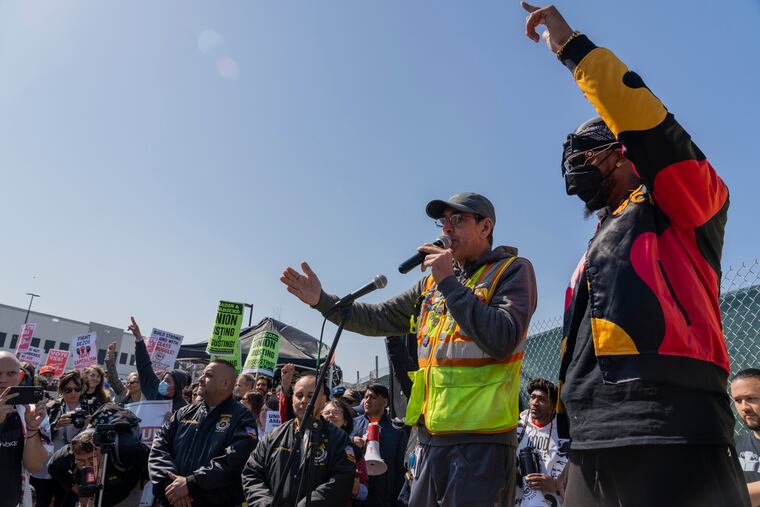Amazon’s new labor issue: What to do with too many workers
It's unlikely Amazon will have to lay anyone off. Its warehouses typically experience more than 100% turnover in a given year in part because of the strenuous working conditions, experts say.

Amazon has too many workers, an unusual problem for the United States’ second-largest private employer.
The company said on its quarterly earnings call last week that it hired too quickly in its warehouses during the pandemic to keep up with demand for hand sanitizer and masks, as well as to cover for workers who caught the omicron variant. The pandemic sales boom is waning as people leave their houses and more businesses open up.
“As the variant subsided in the second half of the quarter and employees returned from leave, we quickly transitioned from being understaffed to being overstaffed, resulting in lower productivity,” chief financial officer Brian Olsavsky said on a call with analysts last week. He said the company would work to remedy that.
That’s a far cry from the last several years for the e-commerce giant, when it struggled to hire enough workers fast enough to staff its ever-growing network of warehouses — including nearly 60 in the Philadelphia area. It has hired hundreds of thousands of workers — 270,000 just in the second half of last year — to stay on top of its same-day and one-day shipping pledges.
It’s unlikely that Amazon will have to lay off anyone. Its warehouses typically experience more than 100% turnover in a given year, in part because of the strenuous working conditions, experts say, and attrition could solve the issue.
Amazon spokesperson Kelly Nantel said the company is not considering layoffs at its warehouses.
Still, labor organizers who are eyeing unionizing the company’s U.S. warehouses — one such effort has been successful so far in Staten Island — have said that workers are drawn to unionization in large part because of Amazon’s ambitious standards for worker efficiency.
"I don't think that increasing efficiency needs to come at the cost of the workers and needs to come at the cost of working conditions," said Matthew Bidwell, an associate professor of management at the University of Pennsylvania's Wharton School. "But it's very easy for that to happen unless you are thinking carefully."
Nantel said in emailed statements that productivity is not about a faster pace of work but changing things to make work more efficient. She used the example of fewer workers being able to unload trucks because of social distancing guidelines. Now, more workers could unload at the same time. (Amazon founder Jeff Bezos owns the Washington Post.)
Amazon has been easing its coronavirus restrictions at its warehouses for the last several months, after ramping up safety policies in the early months of the pandemic. The company says it is following federal and local guidelines.
Unionization pushes at a Bessemer, Ala., warehouse and in New York grew in part out of worker concerns about coronavirus safety at the facilities, which stayed open even while stay-at-home orders were in effect because those jobs were considered essential work.
The union movement, which is gaining interest at some of the company’s more than 1,000 warehouses across the United States, involves advocating higher pay, expanded benefits and better treatment for workers — including more breaks and less intense surveillance. (Amazon said it keeps a “level of security within our operations to help keep our employees, buildings, and inventory safe.”)
Workers at Amazon warehouses are often monitored by how long they stray from their work station, a metric called “time off task.” The company has faced criticism for how closely it tracks this, and workers have said they’ve struggled with being away for too long as they made long treks to a restroom or to break rooms in the facilities, which can stretch more than one million square feet. (Amazon said in a report that workers are “able to take informal breaks to stretch, get water, or talk to a manager.”)
An analysis last year of work-related injury data from the Occupational Safety and Health Administration showed that Amazon reported a higher rate of serious injury incidents that caused employees to miss work or be shifted to light-duty tasks than at other warehouse operators in retail. Amazon’s Nantel said that the company saw an “increase in recordable injuries during this time from 2020 to 2021 as we trained so many new people,” and that it is making improvements on reducing injuries.